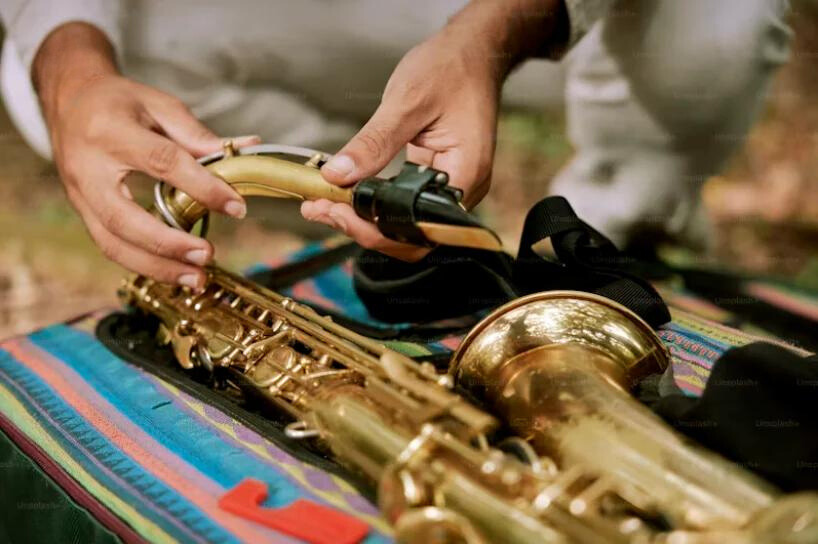The History of Music
The History of Music
Music is one of humanity’s oldest art forms, deeply intertwined with the evolution of civilization. Below is a concise overview of its history:
1. Ancient Music (Tens of Thousands BCE – 5th Century CE)
-
Origins: The earliest instruments, such as bone flutes dating back 40,000 years (found in Germany), emerged in the Paleolithic era. Primitive music was likely linked to religious rituals, labor chants, or emotional expression.
-
Music in Early Civilizations:
-
Mesopotamia: The Sumerians invented harps, lyres, and documented early music theory.
-
Ancient Egypt: Music was central to religious ceremonies, with instruments like the sistrum, harp, and double oboe.
-
China: During the Shang and Zhou dynasties, instruments such as bianzhong (bronze bells) and qing (stone chimes) were developed, forming the "pentatonic scale" (gong, shang, jue, zhi, yu). Confucianism integrated music with ritual and social order.
-
Ancient Greece: Established foundational music theory, including Pythagoras’ mathematical study of intervals. Music was fused with poetry in theatrical performances.
-
2. Medieval Music (5th–15th Centuries)
-
Dominance of Sacred Music: Gregorian Chant became the standardized liturgical music of the Western Church, characterized by monophonic, unaccompanied vocals.
-
Rise of Secular Music: Troubadours in southern France composed love poetry and songs; Minnesänger (minnesingers) flourished in Germany.
-
Birth of Polyphony: After the 9th century, Organum (early polyphony) emerged, leading to multi-voiced compositions. The Notre Dame School (12th–13th centuries) exemplified this development.
3. Renaissance Music (15th–16th Centuries)
-
Golden Age of Polyphony: Composers like Josquin des Prez and Palestrina crafted intricate, harmonious sacred polyphony.
-
Secular Music Flourishes: Italian madrigals, French chansons, and other secular vocal forms gained popularity.
-
Instrumental Advancements: Instruments such as the viol, lute, and early organs became prominent, paving the way for independent instrumental music.
-
Reformation’s Impact: Martin Luther promoted chorales (hymns), democratizing music in Protestant traditions.
4. Baroque Era (1600–1750)
-
Birth of Opera: Claudio Monteverdi’s L'Orfeo (1607) marked the maturation of opera as a genre.
-
Instrumental Music Ascendant: Concertos (e.g., Vivaldi’s The Four Seasons), sonatas, and fugues thrived. J.S. Bach’s The Well-Tempered Clavier codified the tonal system.
-
Drama and Ornamentation: Music emphasized contrast and emotional intensity, exemplified by Handel, Lully, and Bach.
5. Classical Period (1750–1820)
-
Form and Balance: Haydn, Mozart, and Beethoven formalized structures like the symphony, string quartet, and sonata-allegro form.
-
Enlightenment Ideals: Clarity, elegance, and logical progression defined the era, though Beethoven’s later works foreshadowed Romanticism.
6. Romantic Era (19th Century)
-
Emotion and Nationalism: Composers like Chopin, Liszt, and Wagner prioritized personal expression and dramatic narratives. Nationalist schools emerged (e.g., Tchaikovsky, Dvořák, Grieg).
-
Orchestral Innovation: Berlioz pioneered programmatic music; Mahler and Richard Strauss expanded orchestral scale.
-
Art Songs and Piano Mastery: Schubert’s Winterreise and Schumann’s piano cycles became iconic.
7. 20th-Century Music (Post-1900)
-
Breaking Tonality: Schoenberg developed atonality and the twelve-tone technique; Stravinsky’s The Rite of Spring revolutionized rhythm.
-
Diverse Movements:
-
Jazz and Blues: African American-rooted improvisational genres reshaped global culture.
-
Rock and Electronic Music: The 1950s rock 'n' roll revolution; synthesizers and digital tools transformed production post-1970s.
-
Global Fusion: African drumming, Indian ragas, and Latin rhythms entered mainstream music.
-
-
Experimentation: John Cage’s 4'33" redefined music’s boundaries; film and video game scores emerged as art forms.
8. Contemporary Music (21st Century–Present)
-
Digital Age and Streaming: The internet revolutionized distribution, empowering independent artists.
-
Genre Blurring: Hip-hop, EDM, K-pop transcend cultural borders; classical-pop collaborations thrive.
-
Technological Frontiers: AI composition, virtual reality concerts, and immersive audio redefine creation and experience.

Conclusion
The history of music is not merely an evolution of art but a testament to humanity’s emotions, ideas, and technological ingenuity. From bone flutes in ancient caves to digital symphonies, music remains a universal language that mirrors each era’s spirit. As technology and culture continue to collide, music will endlessly reinvent itself, resonating across time and space.







